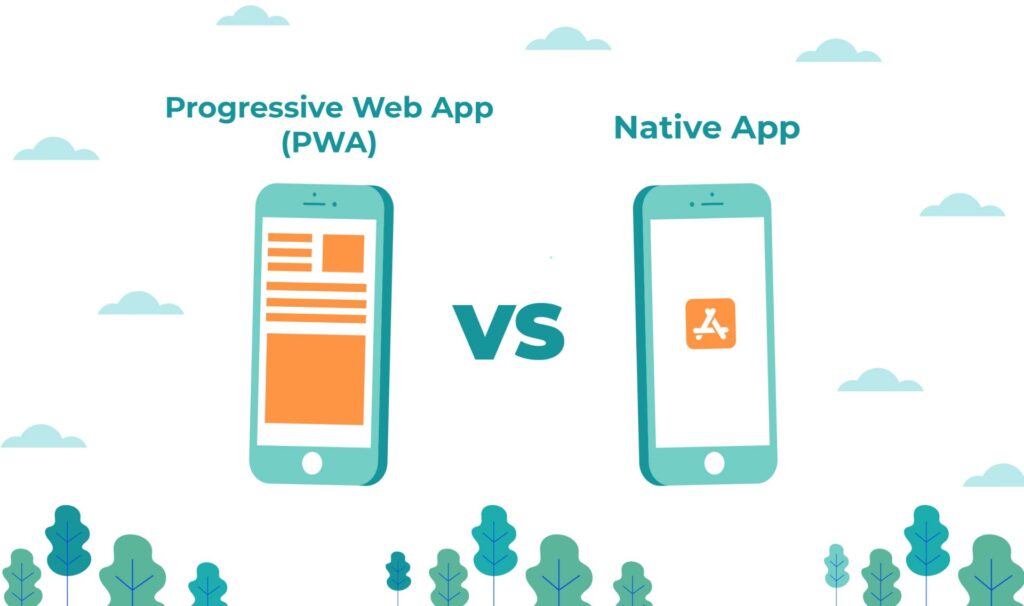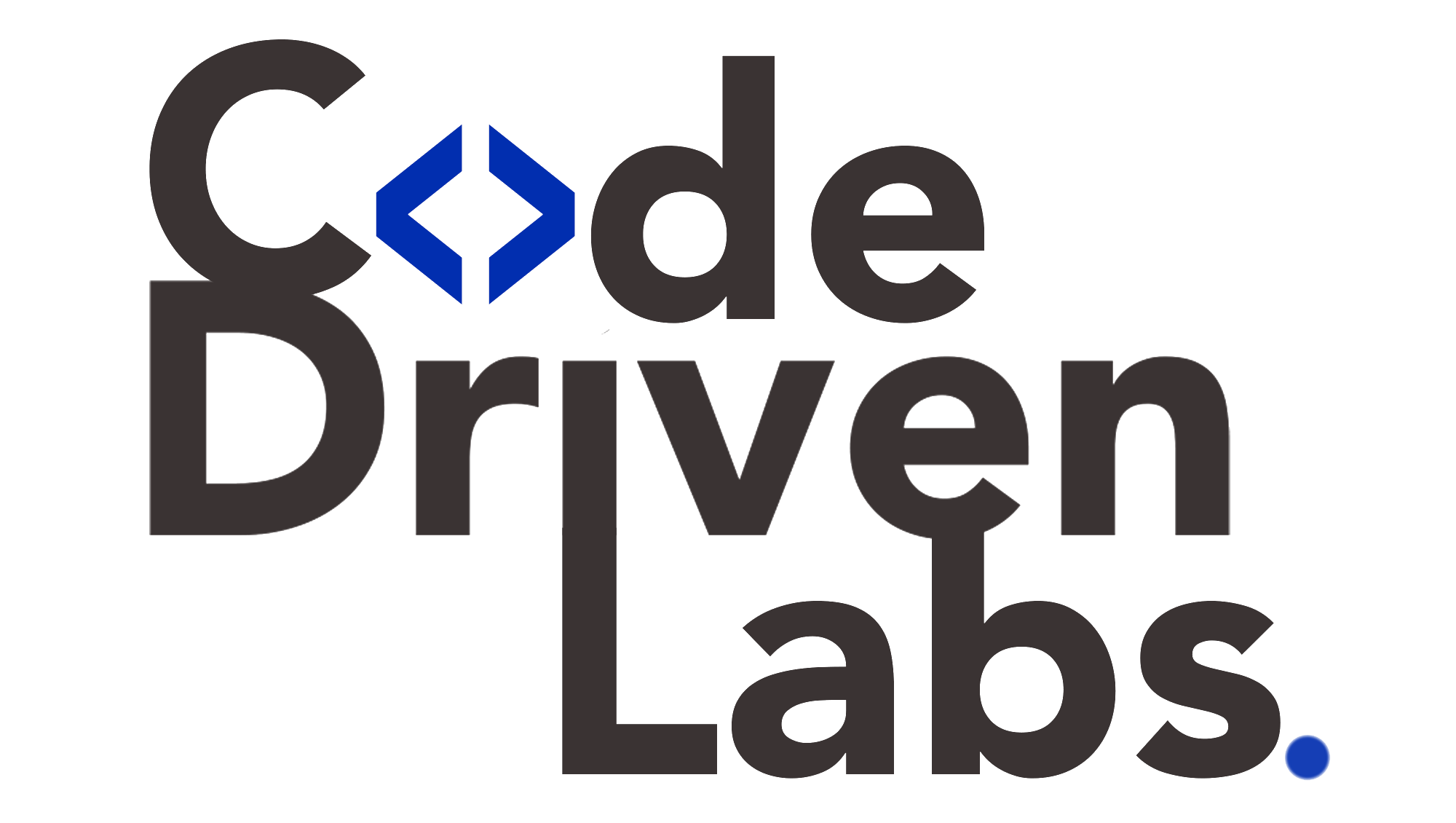Level up your business with US.
- Home
- Web Apps vs Native Apps vs PWA: Best Choice for Your Business
Web Apps vs Native Apps vs PWA: Best Choice for Your Business
July 2, 2025 - Blog
Web Apps vs Native Apps vs PWA: Best Choice for Your Business
In 2025, mobile and web experiences remain at the heart of how businesses connect with customers, deliver services, and grow revenue. But one of the first — and most critical — decisions you’ll face when launching a new digital product is choosing the right app architecture: web app, native app, or progressive web app (PWA).
Each approach has unique advantages and trade-offs that can impact cost, performance, user experience, and time to market. This guide breaks down the key differences, helps you identify which solution best fits your goals, and shows how Code Driven Labs ensures your choice leads to business success.

What Are Web Apps, Native Apps, and PWAs?
Web Apps
Web apps are applications built with web technologies (HTML, CSS, JavaScript) that run in a web browser. They are accessed via a URL and work on any device with a compatible browser.
Examples: Google Docs, Trello web version, LinkedIn in-browser experience.
Native Apps
Native apps are developed specifically for a single operating system, like iOS or Android, using platform-specific languages (Swift/Objective-C for iOS; Kotlin/Java for Android). They’re downloaded from app stores, installed on devices, and can leverage device hardware fully.
Examples: Instagram mobile app, WhatsApp, Spotify mobile app.
Progressive Web Apps (PWAs)
PWAs combine the best of web and native apps. Built with standard web technologies, PWAs behave like native apps: they can be installed on a device home screen, work offline, and send push notifications.
Examples: Twitter Lite, Starbucks PWA, Pinterest PWA.
Web Apps: Pros and Cons
Pros:
-
Cross-Platform: Runs on any device with a browser — no separate versions for iOS or Android.
-
Easier to Maintain: Single codebase simplifies updates and bug fixes.
-
Lower Development Costs: Faster and cheaper to build compared to native apps.
-
No App Store Approval: Updates go live immediately without waiting for store reviews.
Cons:
-
Limited Offline Functionality: Users lose access when offline unless offline storage is specifically implemented.
-
Performance: Slower than native apps, especially for graphics-intensive tasks.
-
Limited Device Access: Restricted access to hardware features like camera, sensors, or Bluetooth.
Native Apps: Pros and Cons
Pros:
-
Superior Performance: Optimized for the platform, ideal for games or high-performance apps.
-
Full Hardware Access: Can use device sensors, cameras, GPS, biometrics, etc.
-
Better UX: Follows platform guidelines for smoother and more intuitive experiences.
-
Monetization Opportunities: Access to app store features like in-app purchases.
Cons:
-
Higher Costs: Separate apps must be developed and maintained for each platform.
-
Longer Time to Market: Two teams or longer development cycles increase launch time.
-
App Store Hurdles: Submitting, waiting for approval, and potential rejections slow updates.
PWAs: Pros and Cons
Pros:
-
Cross-Platform with App-Like UX: Single codebase that feels like a native app.
-
Offline Support: Service workers enable functionality even without a connection.
-
Push Notifications: Engage users directly from their browser-installed app.
-
No App Store Required: Distribute directly through the web, avoiding store fees and restrictions.
-
Fast Loading: Caching makes PWAs load faster than traditional web apps.
Cons:
-
Hardware Access Limitations: PWAs can’t always access features like advanced sensors or Bluetooth.
-
Platform Support Gaps: iOS support for some PWA features (like push notifications) is improving but can lag behind Android.
-
Limited Discoverability: While installable, they don’t benefit from app store search exposure.
Web App vs Native App vs PWA: Choosing What’s Right for You
To make the best decision, consider these factors:
-
Performance Requirements
If you’re building a game or an app needing high responsiveness, native apps still win. -
Time and Budget
Web apps and PWAs allow faster, more cost-effective development with one codebase. -
Offline Functionality
PWAs bridge the gap, offering offline capabilities web apps can’t match. -
User Experience Goals
Native apps can provide polished, platform-consistent experiences, but PWAs come close without store limitations. -
Monetization Strategy
Planning to use app store subscriptions or in-app purchases? Native apps may be necessary. -
Distribution and Updates
If you want instant updates without user downloads, web apps and PWAs are best.
Use Cases
-
Best for Web Apps: Internal dashboards, B2B tools, content-rich sites, or apps that don’t need device hardware.
-
Best for Native Apps: Consumer apps demanding advanced features (e.g., AR, games), apps requiring deep device integration, or those needing app store monetization.
-
Best for PWAs: eCommerce platforms, media sites, and startups wanting near-native UX with faster development and broad reach.
How Code Driven Labs Helps You Make the Right Choice
Choosing your app architecture is only the first step. Execution determines whether your app meets business goals, delights users, and scales sustainably. Here’s how Code Driven Labs supports your journey:
1. Needs Assessment & Strategy
They dive into your business objectives, target audience, feature requirements, and budget to recommend the architecture that aligns with your goals.
2. Rapid Prototyping
They quickly build prototypes — whether web, native, or PWA — to test assumptions, validate designs, and refine features before full-scale development.
3. Custom Development
Their experienced engineers develop high-quality web apps, native apps (iOS/Android), and PWAs with attention to performance, security, and scalability.
4. User Experience Design
Code Driven Labs designs UI/UX tailored to your chosen platform’s best practices, ensuring your app is intuitive and engaging.
5. Testing and Quality Assurance
They perform thorough testing — functional, performance, security, and usability — to catch issues early and deliver flawless apps.
6. Deployment and Support
They help you launch your web app or PWA seamlessly or navigate app store submissions for native apps, and provide maintenance for updates, bug fixes, and feature enhancements.
7. Cross-Platform Expertise
Can’t decide between native and PWA? Code Driven Labs can build hybrid solutions or combine approaches for optimal coverage.
Conclusion: Build Apps that Empower Your Business
There’s no universal winner between web apps, native apps, and PWAs. The best choice depends on your specific business needs, target users, and product vision.
-
Choose Web Apps for budget-friendly, cross-platform apps with simpler needs.
-
Choose Native Apps for performance-critical, feature-rich apps requiring full hardware integration.
-
Choose PWAs for the sweet spot between reach, cost-effectiveness, and app-like experience.
With the right strategy and technical partner, your choice can become a powerful asset for user engagement and growth. Code Driven Labs ensures your app — whatever the architecture — delivers exceptional performance, security, and user satisfaction.
